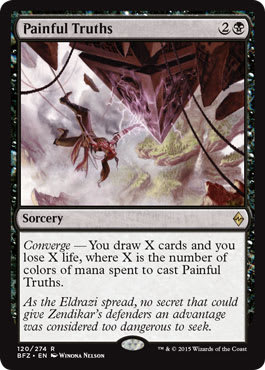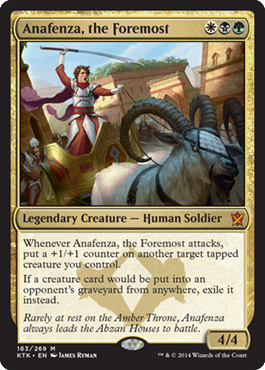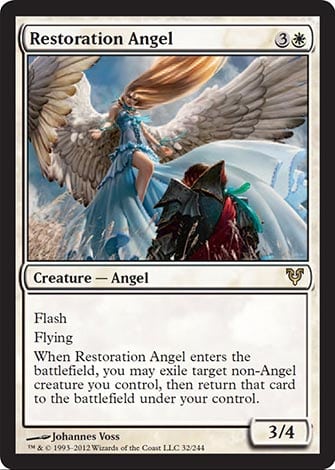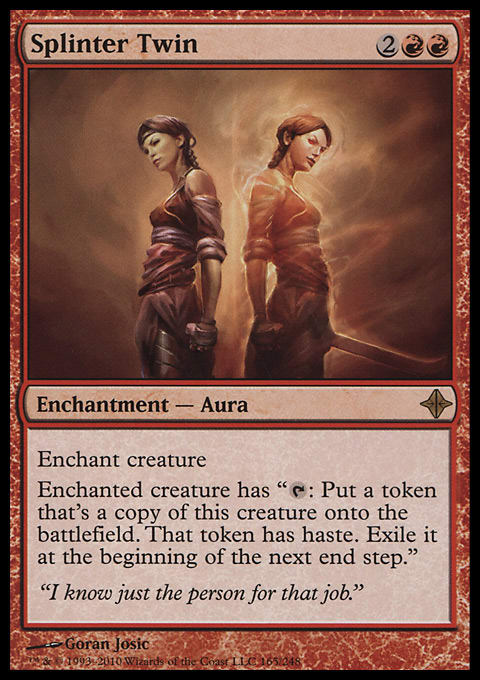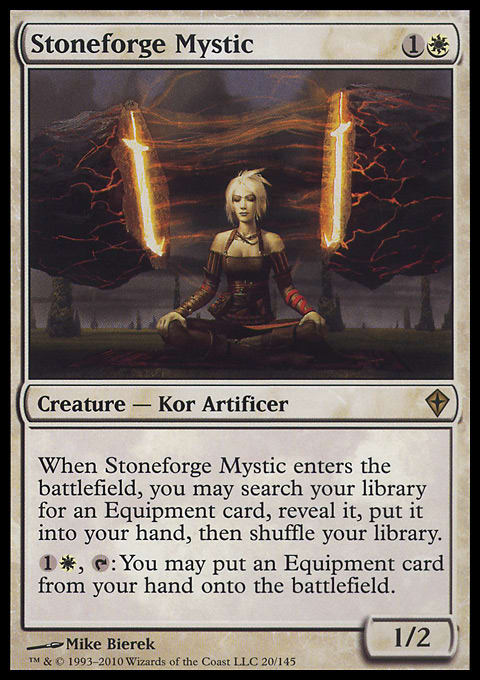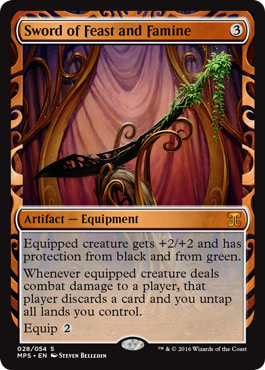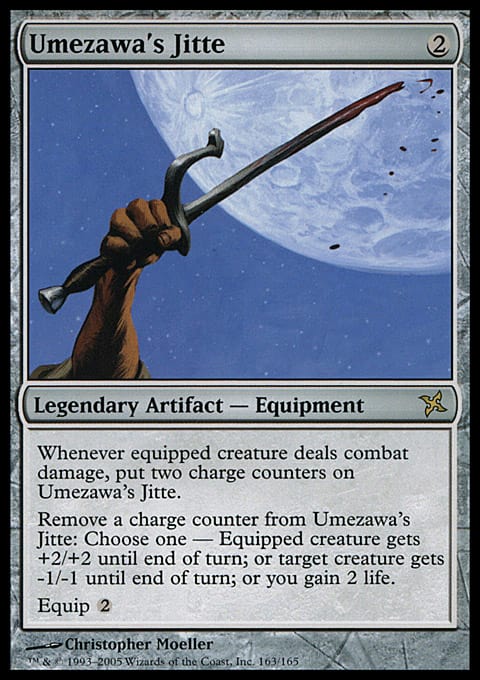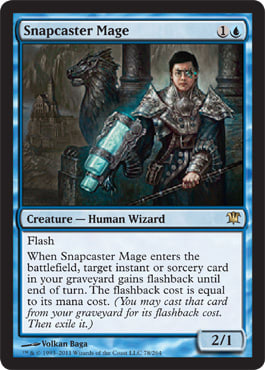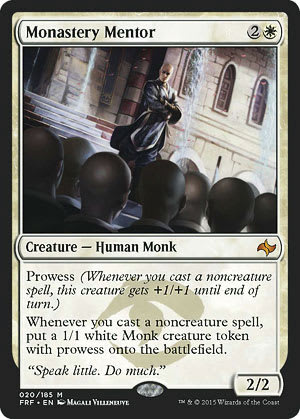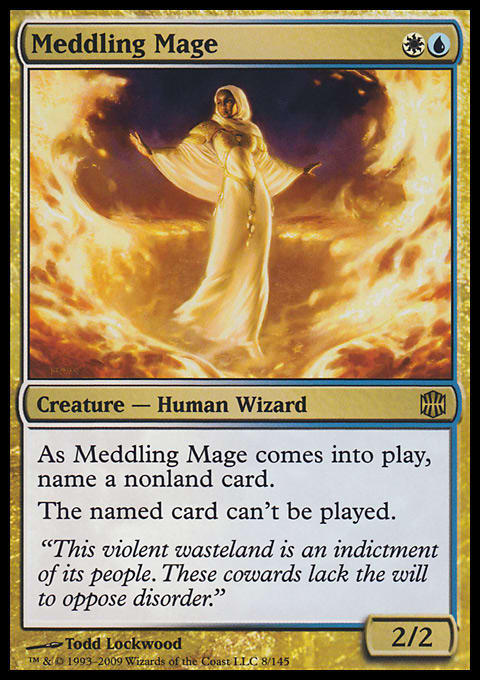Hey, everyone!
This is not my most clever article title, but I want to drive the point across: I really like the big three Constructed formats right now. There are plenty of decks out there, but there’s something I would happily register in all three formats. Abzan Aggro is very well-positioned in Standard despite everyone knowing the power; it continues to win nearly all of the big events. Blue-White-Red Twin took down Grand Prix Pittsburgh in the hands of Alex Bianchi, and an updated list has been performing well for me. I have been a huge fan of Splinter Twin ever since the Grixis shell was introduced. Legacy has been a tough nut to crack for me lately, but I have returned to my roots: Esper Stoneblade.
Standard is on the minds of the masses right now, so let’s get started there.
Abzan Aggro
Fellow Midwesterner and longtime friend Adam Yurchick took down the TCGplayer Invitational with Abzan Aggro. I made some small changes to his sideboard, but the main deck is very strong, and I didn’t want to adjust it.
Abzan Aggro ? Battle for Zendikar Standard | Kyle Boggemes
- Creatures (20)
- 2 Heir of the Wilds
- 2 Wingmate Roc
- 4 Den Protector
- 4 Siege Rhino
- 4 Warden of the First Tree
- 4 Anafenza, the Foremost
- Planeswalkers (4)
- 4 Gideon, Ally of Zendikar
- Spells (10)
- 2 Dromoka's Command
- 2 Murderous Cut
- 4 Abzan Charm
- 2 Silkwrap
- Lands (26)
- 2 Forest
- 2 Plains
- 1 Smoldering Marsh
- 1 Sunken Hollow
- 2 Canopy Vista
- 2 Llanowar Wastes
- 4 Flooded Strand
- 4 Shambling Vent
- 4 Windswept Heath
- 4 Wooded Foothills
- Sideboard (15)
- 3 Duress
- 2 Transgress the Mind
- 1 Ultimate Price
- 1 Arashin Cleric
- 2 Surge of Righteousness
- 2 Hallowed Moonlight
- 1 Tasigur, the Golden Fang
- 3 Self-Inflicted Wound
This is just an all-around solid deck that continues to win tournaments left and right. It has a proactive game plan, so it’s hard to be caught off guard. I really like the control decks of the format since they draw a billion cards thanks to Painful Truths, Treasure Cruise, and Dig Through Time, but I can’t deny the calling of an efficient Abzan shell.
Speaking of Painful Truths, I have chosen to exclude them from my seventy-five because I feel it’s more popular than it should be. Don’t get me wrong; the card is quite powerful, but it’s following a very familiar pattern. When a card is discovered to be good, it becomes overplayed and then gradually is reduced to a realistic level in the metagame. That’s exactly what’s happening when it ends up in Abzan Aggro.
Abzan Aggro has a strong Game 1 against Four-Color Rally decks, which are gaining more popularity. They gain resilience against Anafenza, the Foremost after sideboard with four Murderous Cuts, but Hallowed Moonlight will ensure the matchup is still favorable. I have tested against Rally, and the deck is more consistent than it looks on paper. Their instants (Collected Company and Rally the Ancestors) are scary to play against. I advise dedicating sideboard slots to combat this deck because they are winning despite Anafenza being popular.
Plenty of Abzan Aggro lists I’ve seen aren’t dedicating enough slots to the Atarka Red matchup. That deck will kill you out of nowhere if you aren’t ready, and I don’t need a bunch of catch-all cards in my ’board because the main deck is so strong. I prefer a more flexible sideboard for control decks because I may need to ’board out plenty of cards for many matchups, but Abzan can leave in creatures and removal and be just fine.
I would say that a disadvantage to playing Abzan is all of the mirror matches you should expect to face, but I’m not sure that’s a bad thing. Abzan would not be winning so many tournaments if the deck weren’t able to put up a fight against all of the top decks. When I play Abzan, I think I have a shot against any opponent, and that’s a great feeling.
The reason I care about Standard during the holiday season is that I plan to play a 5K in Lansing, Michigan on Saturday. I felt this deck is a great choice for me since I have a history of playing Abzan Aggro and even put up a Top 4 finish with it at StarCityGames Open Cleveland. Steve Rubin also placed second at StarCityGames Open Las Vegas last weekend with the exact same main deck, which makes me feel even better about my chances.
My last big positive for Abzan Aggro is that it isn’t too tough to play. This is normally a bad thing, but I also see great players putting up high finishes; it appears being aware of the metagame and playing tight can significantly increase your chances.
Wish me luck at the 5k this Saturday; I’m sure there will be plenty of great players there, as RIW, Get Your Game On, and Evo Games have been putting up good results lately.
Blue-White-Red Twin
Modern is a completely different animal for me than Standard. I don’t care about Modern because of a 5k; I care about it because I am playing Pro Tour Atlanta in February. This may be considered a heavy amount of planning, but the Eternal formats won’t change too much in two months. The only caveat to my Modern testing is the banned-list announcement in January, but I won’t let that stop me from testing early. I also don’t want to spend any time speculating about what will be changed on the banned list because that’s not a very helpful exercise, and many articles are devoted to this subject entirely for some reason.
As I have been testing for Pro Tour Atlanta, I have been building and playing a number of decks: Amulet Bloom, Tron, Abzan Control, Grixis Control, Grixis Twin, Living End, Burn, Big Zoo, G/W Hatebears, Infect, and more. The one I have been having by far the most success with is U/W/R Twin. I started with Alex Bianchi’s list, but I felt it was missing something. The next thing I know, Paulo Vitor Damo da Rosa writes about article about how to revamp the deck, and I love it.
I’m playing almost the exact main deck as Paulo, but I have made a fair number of modifications to the sideboard to adapt to my own style of play:
U/W/R Twin ? Modern | Kyle Boggemes
- Creatures (16)
- 3 Restoration Angel
- 3 Wall of Omens
- 4 Deceiver Exarch
- 4 Snapcaster Mage
- 2 Kiki-Jiki, Mirror Breaker
- Spells (20)
- 1 Dispel
- 1 Spell Snare
- 3 Path to Exile
- 4 Lightning Bolt
- 4 Remand
- 4 Serum Visions
- 3 Splinter Twin
- Lands (24)
- 1 Mountain
- 1 Plains
- 3 Island
- 1 Cascade Bluffs
- 1 Desolate Lighthouse
- 1 Hallowed Fountain
- 1 Sacred Foundry
- 2 Steam Vents
- 2 Sulfur Falls
- 3 Celestial Colonnade
- 4 Flooded Strand
- 4 Scalding Tarn
- Sideboard (15)
- 2 Lightning Helix
- 3 Stony Silence
- 2 Dispel
- 1 Negate
- 1 Pia and Kiran Nalaar
- 1 Engineered Explosives
- 1 Glen Elendra Archmage
- 1 Jace, Architect of Thought
- 2 Vendilion Clique
- 1 Rending Volley
I am currently 24–3 with this deck. It takes the instant-win piece of Splinter Twin and combines it with the classic U/W/R Control strategy. It doesn’t feel like Restoration Angel should win so many games by herself, but she does. Before Modern became so diverse, I played U/W/R Control that won with Vendilion Cliques and Restoration Angels, so I didn’t have to tap out on my turn against degenerate strategies, and this deck feels very similar.
There have been many Modern writers who say things along the lines of, “I want to be doing something degenerate in this format.” I agree with this statement, which is why I abandoned U/W/R Control in the first place, but I eventually moved to Grixis Twin. It’s nice to have some countermagic to interact with the opponent and library manipulation but still be able to win against bad matchups quickly. I switched from Grixis because I hated my Burn matchup, and it has a bad time against Jund and Abzan.
The main deck is fairly similar to Alex Bianchi’s list, but it goes more all-in on the combo aspect by adding a second Kiki-Jiki, Mirror Breaker. I didn’t like playing one because I would have to fetch three red sources in anticipation of drawing it, but I often didn’t. The second copy helps make my efforts of fetching for red aggressively not go to waste as often.
Running three copies of Path to Exile seems strange, but I think it’s the right number. Wall of Omens is surprisingly great against all of the fair decks, except Affinity (most of that deck’s threats fly). I tried a list this week at a local event at Get Your Game On with only two Wall of Omens, and I regretted it; it wasn’t enough. There’s no need to play four Path to Exiles with so many Wall of Omens. The three Walls help with making my Splinter Twins, Restoration Angels, and Kiki-Jikis get more value. When I have three Wall of Omens, Kiki-Jiki can just come into play and draw a card when it dies, which adds to the card-advantage strategy.
A great reason to choose this deck is that it doesn’t get hated out by any specific cards, which is rare for Modern combo. Graveyard hate would give me fits when I played Grixis, but I only have Snapcaster Mage that cares now. Blood Moon isn’t a big deal because there is a Plains and three Islands that I can fetch with eight lands; I can win with a single blue or white source thanks to comboing with Restoration Angel or Deceiver Exarch. Choke and Boil should be scary, but there are three Celestial Colonnades, two Sulfur Falls, and a Cascade Bluffs to keep my blue mana intact. Even Spellskite can’t stop a Kiki-Jiki combo kill with Deceiver Exarch or Restoration Angel!
It’s also hard to flood out with this deck because I have three Colonnades and a Desolate Lighthouse to act as mana-sinks. Kiki-Jiki costs 5 mana, but I could use an additional land if I want to immediately flash back a spell with a copied Snapcaster Mage (so look for a fourth red source to flash back Lightning Bolt).
The Splinter Twin plan is still weak in the mirror and B/G/x midrange, but I don’t have to take out Restoration Angel or Kiki-Jiki, so I can always have access to the combo kill. This is a very valuable option to have at your disposal and is the reason I don’t have Keranos, God of Storms in my sideboard: I don’t cut my 5-drops against anyone. Since I’m cutting Splinter Twins against grindy decks, I have three 4-drops ready to replace them: Glen Elendra Archmage, Jace, Architect of Thought, and Pia and Kiran Nalaar. There are matchups, like Affinity, in which you leave in the combo but also want Pia and Kiran, so the option to make copies exists (and make all of the Thopters).
Lightning Helix is my choice to interact with Burn because it also comes in against every other creature deck. Bianchi opted for Timely Reinforcements, but it takes too much time to set up, as Burn is ready with Skullcrack and Atarka's Command.
The single Rending Volley is there to respect opposing Twin decks. Since I cut the fourth Path to Exile, I want another way to interact with Deceiver Exarch, but I don’t want to ramp my opponent. It can also come in versus hatebears, which is becoming increasingly popular, as well as Merfolk.
Stony Silence may look strange, as Bianchi was able to win the Grand Prix by defeating many Affinity players without it, but I’m more concerned about Tron. I don’t mind drawing two copies because it acts as insurance against Nature's Claim. I need to combo off against Tron, but that’s difficult with a Chromatic Star in play; the opponent can cast Nature's Claim or Rending Volley with any land you don’t tap.
This deck is great, and I hope the format doesn’t change too much for the Pro Tour. To practice in the short term, I will play a Grand Prix Trial at BC Comix this weekend and let you know how it goes. Wish me luck!
Esper Stoneblade
Legacy has been a wild ride for me lately. I have been playing local events, but I haven’t found my footing with Miracles since Dig Through Time was banned. Monastery Mentor isn’t amazing in the main deck because it doesn’t go well with Terminus, and most opponents are ready with removal. I needed to try something else because what I was doing in the past was clearly not working for me anymore.
I briefly moved over to Shardless Sultai, but I don’t think I have ever been more displeased with a deck I thought was initially up my alley. Once the tournament began, I realized I was afraid to play against nearly every person in the room. It’s hard to find something good to say about the deck, so I will just leave it there.
When I began playing Legacy in 2005, I played W/U Landstill. This didn’t change until Owen Turtenwald played W/U Stoneforge/Standstill in 2011 at Grand Prix Providence. There was a period of four years when I played Stoneforge Mystic decks in Legacy and didn’t try Miracles until Treasure Cruise was ruining the format. After they banned Treasure Cruise, I stayed for the Dig Through Times, and now here I am, back to my old Stoneforge ways.
Here’s my current list:
Esper Stoneblade ? Legacy | Kyle Boggemes
- Creatures (10)
- 2 Baleful Strix
- 2 True-Name Nemesis
- 4 Stoneforge Mystic
- 2 Vendilion Clique
- Planeswalkers (2)
- 2 Jace, the Mind Sculptor
- Spells (26)
- 1 Spell Pierce
- 1 Spell Snare
- 2 Counterspell
- 4 Brainstorm
- 4 Force of Will
- 4 Swords to Plowshares
- 1 Inquisition of Kozilek
- 1 Painful Truths
- 1 Vindicate
- 2 Ponder
- 2 Thoughtseize
- 1 Batterskull
- 1 Engineered Explosives
- 1 Sword of Feast and Famine
- Lands (22)
- 1 Plains
- 1 Swamp
- 3 Island
- 1 Marsh Flats
- 1 Scrubland
- 3 Tundra
- 3 Underground Sea
- 4 Flooded Strand
- 4 Polluted Delta
- 1 Academy Ruins
- Sideboard (15)
- 2 Rest in Peace
- 2 Pithing Needle
- 1 Spell Pierce
- 1 Thoughtseize
- 2 Monastery Mentor
- 3 Meddling Mage
- 1 Toxic Deluge
- 1 Supreme Verdict
- 1 Hydroblast
- 1 Umezawa's Jitte
Brian Hockey, a friend from my local shop, was crushing with a deck similar to this, and I decided to revisit the archetype. Baleful Strix and Painful Truths were the best pieces of Shardless B/U/G when I played it, so why not port it over to my old favorite?
There are a few things I do differently than the rest of the world when it comes to Stoneblade:
Sword of Feast and Famine over Umezawa's Jitte — I don’t understand why both Equipment are good against creature decks and control decks but have nothing versus combo. Stoneforge Mystic is supposed to be the primary threat, and Sword gives you a good target against the three major pillars of Legacy. If I play against an interactive deck, I can ’board in Jitte.
Academy Ruins — It’s terrible when your Equipment is hit by removal, discard, or countermagic, so I want a way to still easily close out a game when that happens. With only twenty-two lands, it’s hard to support both Karakas and Academy Ruins, and the latter has been much more impressive. Don’t forget that recurring Baleful Strix is a very powerful play as well.
1 Painful Truths — This card is all the rage, and I think it actually makes sense in most fair Legacy decks. Jace, the Mind Sculptor can be expensive and clunky, so I replaced the third copy with a single Painful Truths and have been happy so far.
0 Snapcaster Mage — I only have so much room for 3-drops, and it seems Vendilion Clique and True-Name Nemesis do more heavy lifting. I never cared for ’boarding out Snapcaster Mage only because I was facing a Deathrite Shaman deck or when Rest in Peace came in. My threats should be more resilient to my own spells. Legacy decks boil down to being afraid against Clique, Nemesis, or both.
Sideboard Monastery Mentor — As I just mentioned, Legacy decks are afraid of Clique or Nemesis; this means I can ’board out a 3-drop in most matchups. Mentor does a good job at being the replacement threat because it’s strong enough to win a game by itself. I don’t play it in the main deck because it can’t be pitched to Force of Will, and there are only twenty-one other blue cards as it is.
Sideboard Meddling Mage — Every time I don’t play Meddling Mage in my ’board, I regret it. It’s most effective against combo decks. This is perfect because I can swap them for Baleful Strix, and I see the opponent’s hand with the Thoughtseize in my ’board. It doesn’t hurt that it’s a blue card, so you can pitch it to Force.
I feel very comfortable playing Esper Stoneblade, as I have been doing it for years. Since the banning of Dig Through Time, I feel the time to bring back Stoneforge is now.
So there you have it: three decks across the three major Constructed formats. It’s rare I feel so confident in my deck selection for Standard, Legacy, and Modern. There is room to innovate all of these decks, and since they fall in the midrange/control side of the spectrum, there’re plenty of opportunities to make tweaks to fit your playstyle.
This weekend is going to be busy for me with all of the different tournaments I have scheduled. I hope I will have some revelations on how to evolve the format next time!
Thanks for reading!
-Kyle













